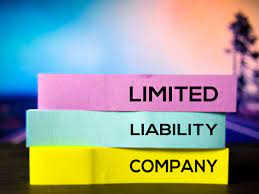You may have heard of the idea of the income tax bracket, but do you know what it is and why it is important? If you’re reading this article, it’s likely because you’re either looking to file your taxes soon or you know someone who is. This post will help you understand the 2023 federal income tax brackets and how they work.
What Is A Tax Bracket?
The tax rate is the range of incomes that gets taxed at a certain rate. Rates typically vary depending on filing status. Rates increase as income does in a progressive system of individual or corporate income taxation.
They tax higher wages at higher rates while they tax lower incomes at relatively lower rates.
Why Do You Need to Know Your Income Tax Brackets and How to Use Them?
The income tax brackets are the minimum rates of income tax that you are liable to pay. They are set by the government and can be changed from time to time depending on the budget.
The rates have changed several times in the past few decades, but we still use them today. When you file your taxes, you will see a list of tax brackets for each of your filing statuses. You can choose one of these and calculate your total taxable income using that rate.
For example, if you are single and make $100k per year, then your gross taxable income would be $100k (i.e., $100k x 10%). The first step towards calculating this is to figure out what percentage of this amount will be taxed at each rate.
The highest rate on a married couple filing jointly is 35%, so this would be 35% x $100k = $35k in taxes owed by both spouses when they file jointly is 35%, so this would be 35% x $100k = $35k in taxes owed by both spouses when they file jointly.
This number is based on the amount earned and whether you are single or married.
Knowing Income Tax Brackets
The income tax bracket is a set amount of money that you can earn before you are taxed at a rate determined by your income. The federal government has set up three different brackets—10%, 15%, and 25%. You pay less or no tax on the first bracket, and more or no tax on the second and third, respectively.
For example, if your income falls within the 10% tax bracket, then all the money you make is taxed at 10%. If your income falls within the 25% tax bracket, then all the money you make is taxed at 25%.
They display the tax rate you will pay on each component of your income in tax brackets. For instance, in 2021, the first $9,950 of your income is subject to the lowest tax rate of 10% if you are single.
Up until the maximum amount of your taxable income, they tax the following portion of your income at a rate of 12%. All taxpayers pay the same rates on the same amounts of taxable income according to the progressive tax system.
The general result is that tax rates are greater for those with higher incomes.
Relevance of Income Tax Bracket
Income tax brackets are a tool to help you figure out how much of your salary you owe. If you’re self-employed, they can also help you estimate how much of your income you’ll owe when you file your taxes.
The IRS has different brackets for single people and married couples filing jointly. The brackets change every year, so make sure to check the current brackets before making any decisions about how much to put into savings or investments based on the information below.
When you file your taxes, the IRS determines your total taxable income before you pay any taxes. Different tax brackets create different standard ways of determining how much you owe. In order to save money on your taxes and not overspend, it’s important to know the different income tax brackets.
Different Types of Income Tax Brackets.
In this part, we will cover the different types of income tax brackets.
We’ll also give you a detailed example to help you understand how they work and how they can be used to your advantage.
The first thing to understand is that there are three different types of tax brackets:
- 1% bracket: This is the lowest bracket, and all taxpayers with an income of less than $0 pay this rate.
- 10% bracket: This is the second lowest bracket, and all taxpayers with an income of less than $10,000 pay this rate.
- 25% bracket: This is the highest bracket, and all taxpayers with an income of greater than $25,000 pay this rate.
We’re going to focus on the 25% tax bracket because it’s common for people to use it as an example when talking about their own situation.
The reason being is that if you make $25,000 per year but are in a 25% tax bracket, then you will have to pay taxes on $10,000 of your income, which means that your effective tax rate will be 25%.
If you were in the 12% tax bracket instead, your effective tax rate would also be 12%.
How Can You Reduce Your Taxable Income?
We will start by comparing standard deduction and personal exemption deductions.
These are two ways that you can reduce your taxable income.
#1. Standard Deduction
The standard deduction is a flat amount that everyone can claim regardless of their income level. It’s available to single filers with children or disabilities, married couples filing jointly, heads of household, and qualifying widows or widowers.
This amount is $12,000 for single filers and $24,000 for married couples filing jointly in 2019 (or $18,000 if you’re 65 or older).
#2. Personal Exemption
The personal exemption is a flat amount that everyone can claim regardless of their income level.
It’s available to each taxpayer claiming a dependent (which includes children and other dependents), each taxpayer who files as head of household or qualifying widow(er) with dependent child(ren), each taxpayer who lives apart from their spouse but whose spouse is not eligible for the exemption due to their own income tax liability (or vice versa), and each taxpayer who lives apart from their spouse but whose spouse would be eligible for the exemption due to their own income.
Federal Income Tax Brackets
Federal income tax brackets are a key part of understanding the tax system. They tell you how much of your income is subject to federal taxes, and they also help you figure out what you owe when filing your taxes.
Individuals may only claim the $1,500 increase in the low and medium income tax offset when they file their income tax returns for the 2021–2023 income year.
In the United States, the federal income tax system(brackets) is based on a progressive tax model. That means that as your income increases, you pay more in taxes.
Income Tax Brackets 2023
The first $8,950 of taxable income is taxed at 10% (or $895.50). Above that amount, they tax your taxable income at 15% ($1,474).
The top marginal rate for 2018 is 37%.
The top tax rate for single taxpayers who earn more than $539,900 ($647,850 for married couples filing jointly) will stay at 37% for tax year 2023.
For incomes beyond $215,950 ($431,900 for married couples filing jointly), the other rates are 35%;
Income Tax Rates
There are seven tax brackets: 10%, 15%, 25%, 28%, 33%, 35%, and 39.6%. The highest income tax bracket is 39.6% for joint filers who earn more than $415,000 for single filers.
The table below shows the income tax brackets and rates for singles, married people, and heads of household. They have prorated the table below to show the income thresholds for all tax bands and taxpayers in 2023 after they for inflation.
The federal income tax rates in 2023 are ten percent, twelve percent, twenty-two percent, twenty-four percent, thirty-two percent, thirty-five percent, and seven percent. Taxpayers who have taxable income exceeding $539,900 for single filers and $647,850 for married couples filing jointly will pay tax at the top marginal rate of 37%.
| Tax Rate | Single Fliers | Married Individuals that are filing jointly returns | Head of household |
| 10% | $0- $10,275 | $0 – $20,550 | $0 – $14,650 |
| 12% | $10,275 -$41,775 | $20,550 – $83,550 | $14,650 – $55,990 |
| 22% | $41,755 – $89,075 | $83,550 – $175,150 | $55,990 – $89,050 |
| 24% | $89,085 – $170,050 | $175,150 – $340, 100 | $89,050 – $170,050 |
| 32% | $170,050 – $215,950 | $340,100 – $431,900 | $170,050 – $215,900 |
| 35% | $215,990 – $539,900 | $431,900 – $647,850 | $215,900 – $539,900 |
| 37% | $539,900 or more | $647,850 or more | $539,900 or more |
Conclusion
Currently, there are seven different federal income tax brackets 2023. Knowing your income can help you determine which category you fit into and what your tax rate is. Then, you can utilize the IRS Tax Rate Schedules for the taxable year to figure out your tax bracket, marginal tax rate, and potential tax liability.
This article has so far discussed all you need to know about the income tax bracket.
Income Tax Bracket FAQs
Which tax bracket carries the highest tax burden?
Taxpayers who have taxable income exceeding $539,900 for single filers and $647,850 for married couples filing jointly will pay tax at the top marginal rate of 37%.
Are tax rates determined by taxable income or total income?
Gross income is the starting point for taxable income, from which they reduce certain permissible deductions to determine the amount of income that is subject to taxation. Taxable income, not gross income, is used to determine tax brackets and marginal tax rates.
What is the Income Tax Brackets 2023?
The 2023 income tax bracket rate for single taxpayers who earn more than $539,900 ($647,850 for married couples filing jointly) will stay at 37% for the tax year 2023.






